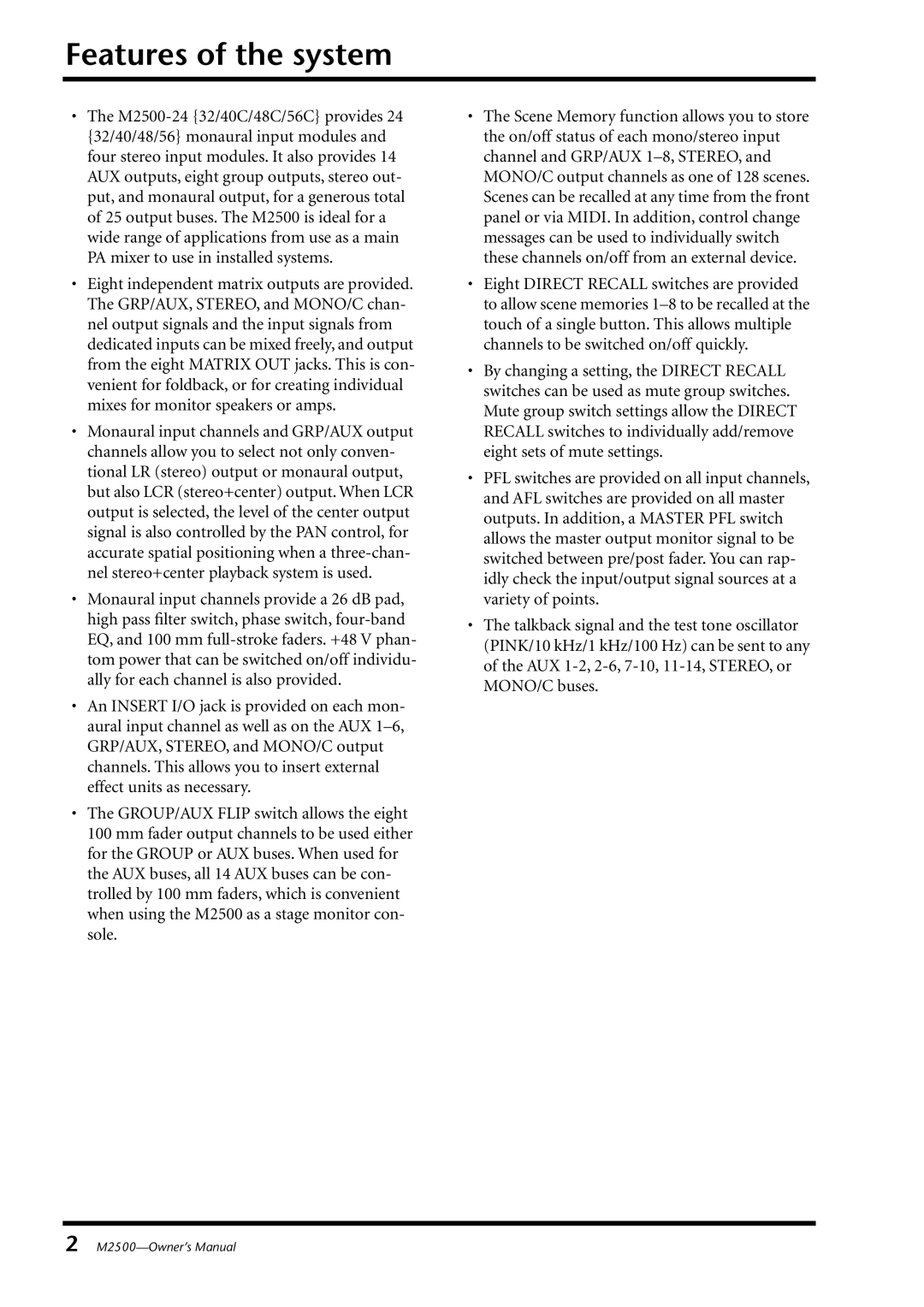
Features of the system
•The
•Eight independent matrix outputs are provided. The GRP/AUX, STEREO, and MONO/C chan- nel output signals and the input signals from dedicated inputs can be mixed freely, and output from the eight MATRIX OUT jacks. This is con- venient for foldback, or for creating individual mixes for monitor speakers or amps.
•Monaural input channels and GRP/AUX output channels allow you to select not only conven- tional LR (stereo) output or monaural output, but also LCR (stereo+center) output. When LCR output is selected, the level of the center output signal is also controlled by the PAN control, for accurate spatial positioning when a
•Monaural input channels provide a 26 dB pad, high pass filter switch, phase switch,
•An INSERT I/O jack is provided on each mon- aural input channel as well as on the AUX
•The GROUP/AUX FLIP switch allows the eight 100 mm fader output channels to be used either for the GROUP or AUX buses. When used for the AUX buses, all 14 AUX buses can be con- trolled by 100 mm faders, which is convenient when using the M2500 as a stage monitor con- sole.
•The Scene Memory function allows you to store the on/off status of each mono/stereo input channel and GRP/AUX
•Eight DIRECT RECALL switches are provided to allow scene memories
•By changing a setting, the DIRECT RECALL switches can be used as mute group switches. Mute group switch settings allow the DIRECT RECALL switches to individually add/remove eight sets of mute settings.
•PFL switches are provided on all input channels, and AFL switches are provided on all master outputs. In addition, a MASTER PFL switch allows the master output monitor signal to be switched between pre/post fader. You can rap- idly check the input/output signal sources at a variety of points.
•The talkback signal and the test tone oscillator (PINK/10 kHz/1 kHz/100 Hz) can be sent to any of the AUX
2
